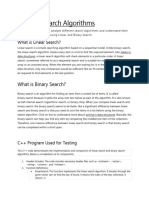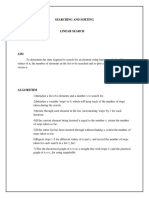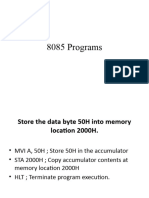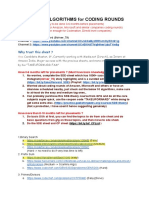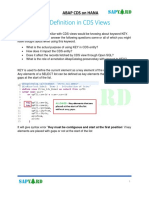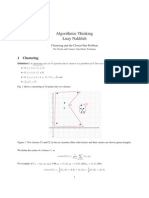0% found this document useful (0 votes)
56 views7 pagesBinary Search Time Analysis in Python
This document describes an assignment to implement and analyze the performance of binary search. The program uses both recursive and iterative binary search to search arrays of varying sizes for both found and not found elements. It measures the time taken and plots graphs of time vs size. The graphs show time increases logarithmically with size, confirming the O(log n) time complexity. Iterative search is faster due to less overhead than recursion. Space is O(1) for iterative and O(log n) for recursive due to call stack.
Uploaded by
Annivesh AshwinCopyright
© © All Rights Reserved
We take content rights seriously. If you suspect this is your content, claim it here.
Available Formats
Download as DOCX, PDF, TXT or read online on Scribd
0% found this document useful (0 votes)
56 views7 pagesBinary Search Time Analysis in Python
This document describes an assignment to implement and analyze the performance of binary search. The program uses both recursive and iterative binary search to search arrays of varying sizes for both found and not found elements. It measures the time taken and plots graphs of time vs size. The graphs show time increases logarithmically with size, confirming the O(log n) time complexity. Iterative search is faster due to less overhead than recursion. Space is O(1) for iterative and O(log n) for recursive due to call stack.
Uploaded by
Annivesh AshwinCopyright
© © All Rights Reserved
We take content rights seriously. If you suspect this is your content, claim it here.
Available Formats
Download as DOCX, PDF, TXT or read online on Scribd
/ 7



















































